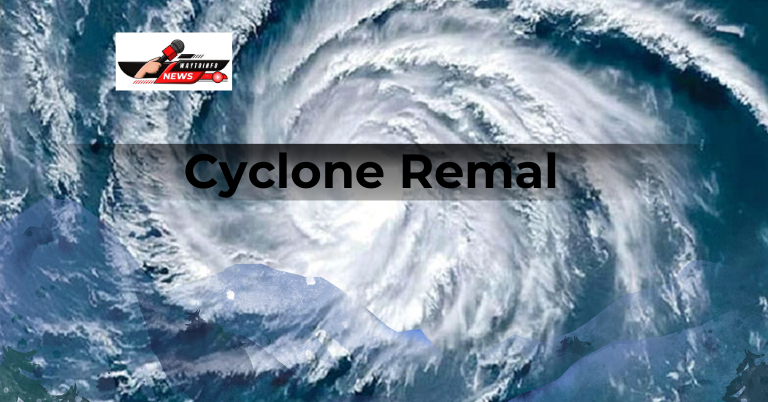Cyclone Remal: A low-pressure system over the Bay of Bengal is predicted to strengthen and, by Sunday evening, become an exceptionally severe cyclonic storm that threatens the shores of Bangladesh and neighboring West Bengal, according to information released by the India Meteorological Department (IMD) to the news agency PTI on Thursday.
It is the first pre-monsoon cyclone in the Bay of Bengal, and it will be named Remal following the Indian Ocean region’s naming procedure.
IMD scientist Monica Sharma knowledgeable PTI that the cyclonic machine is expected to shape right into despair over the critical Bay of Bengal through Friday morning. It will accentuate similarly right into a cyclonic typhoon with the aid of using Saturday morning and is projected to reach Bangladesh and adjacent West Bengal coasts as an intense cyclonic hurricane through Sunday evening, she stated.
Here are a few crucial information concerning Cyclone Remal:
Sunday’s wind speed of 102 kilometers per hour is predicted by IMD to be achieved by the cyclone.
The coastal areas of West Bengal, north Odisha, Mizoram, Tripura, and south Manipur have been warned to expect extremely severe rainfall on May 26–27.
Fishermen are urged to stay away from the Bay of Bengal until May 27 and to head back toward the coast.
Scientists report that cyclonic storms are intensifying more rapidly and maintaining their strength for longer periods due to warmer sea surface temperatures, as the oceans absorb the majority of excess heat from greenhouse gas emissions.
Over the past 30 years, sea surface temperatures have reached their highest levels since records began in 1880.
Senior IMD scientist DS Pai, quoted by PTI, explained that warmer sea surface temperatures lead to increased moisture, which facilitates the intensification of cyclones.
A low-pressure system cannot become a cyclone till the sea surface temperature reaches 27 degrees Celsius, as explained by Madhavan Rajeevan, the former secretary of the Union Ministry of Earth Sciences..Currently, the ocean floor temperature inside the Bay of Bengal is 30 tiers Celsius. The Bay of Bengal and the Arabian Sea are both very warm right now, making it easy for a tropical cyclone to form, he explained.
Tropical cyclones are, however, not just governed by the ocean; the atmosphere also has a significant influence, particularly when it comes to vertical wind shear, which is the change in wind direction or speed with height. If there is a significant amount of vertical wind shear, a cyclone will not intensify. It’ll become weaker, “Rajeevan stated.
Also Read: Politics
The system will initially aid in the monsoon’s advancement throughout the Bay of Bengal. After that, it will separate from the monsoon circulation and draw in a lot of moisture, which would cause the monsoon’s advancement in that region to be slightly delayed, Pai told PTI.

